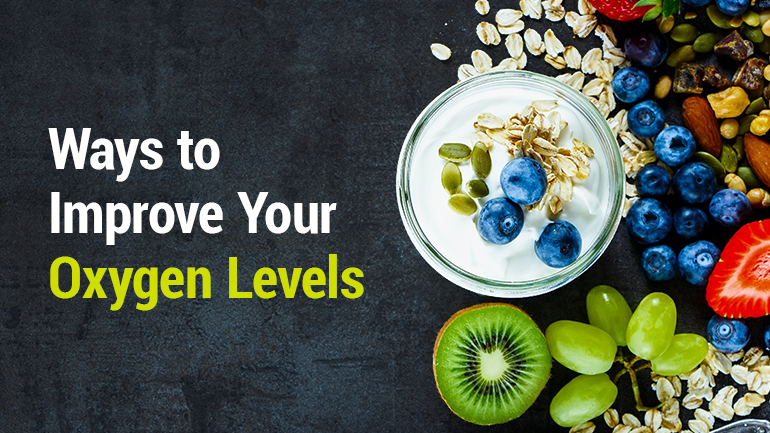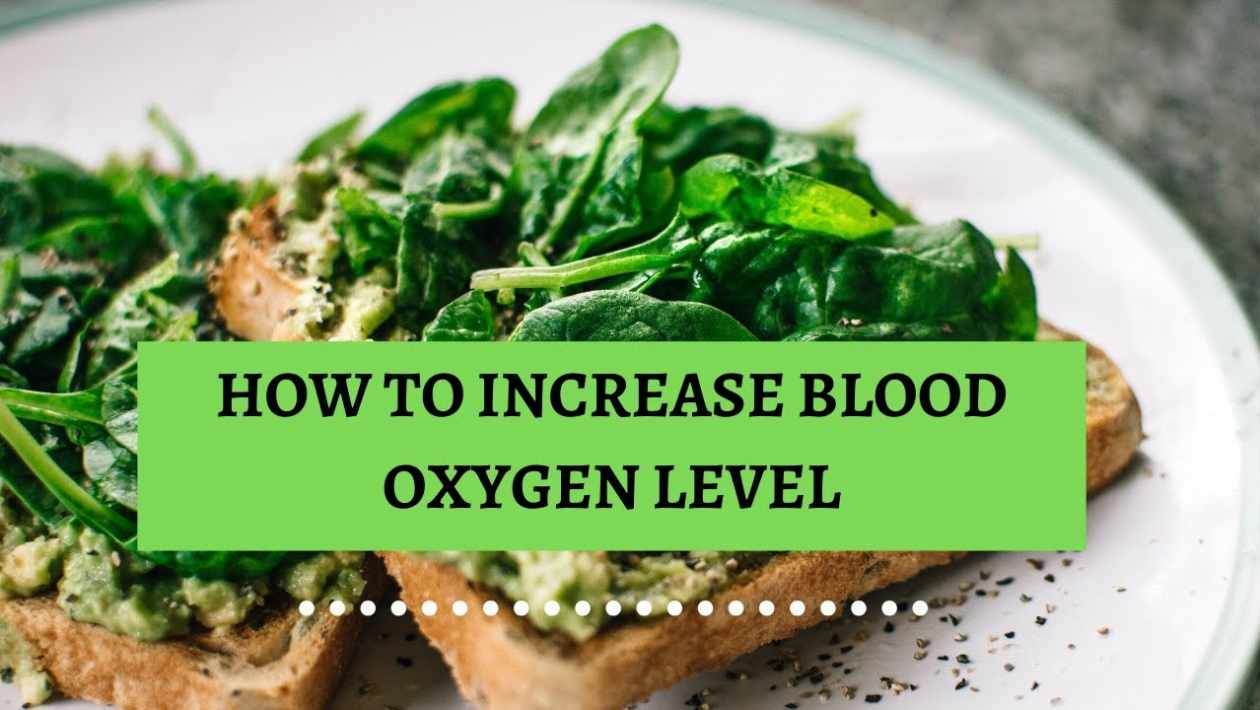Are you thinking to increase blood oxygen level?
A stable adult breathes at a rate of 12 to 20 breaths every minute. However, we can all take even fewer breaths each minute – about 6-8 breaths every minute.
Despite the vast amount of measures we take, most of us are unaware that we are not breathing efficiently. Since it is closely related to our body’s oxygen concentration, optimum Breathing has a significant impact on our fitness and wellbeing.
In this article, we will discuss why oxygen is so vital to us and five easy ways to increase the blood oxygen level.
We get 90% of our strength from oxygen.
Breathing employs chemical and physical mechanisms to provide oxygen to the body’s cells and expel carbon dioxide. Our bodies need oxygen to produce energy to power all of our breathing activities.
CO2 is emitted as a byproduct of this process.
In reality, our breath provides 90 per cent of our total energy.
Cells then require oxygen to break down the organic bonds of nutritional molecules, including sugars, carbohydrates, and enzymes, in order to release the energy they produce.
Every cell in our body requires electricity, and every cell requires oxygen. Bringing oxygen to our cells and bodies is what allows us to engage in physical exercise.
What is the significance of oxygen?

Oxygen has been the essential component for our cells; it is needed for our bodies’ activity, and it provides energy to our bodies and muscles.
Breathing into our lungs provides oxygen to our cells, keeps our brain and heart working, and is thus the most critical priority and function of our bodies.
You will vastly enhance your oxygen level by doing respiratory muscles training (IMT) with the Airofit system.
Oxygen and breathing rate
Isn’t the fact that we breathe and we’re alive a fair enough excuse to increase blood oxygen level?
The reason is that no matter how healthy we live or how much we have the right environment for our bodies, by relying more on our breath, we will be able to encourage our bodies to become stronger and happier. Concentred breathing improves our focus and provides us with more energy.
Oxygen is the aspect that our cells require in order to keep us going and function at a greater level.
As a result, higher oxygen levels enable us to work faster by providing energy to our brains and bodies.
We cannot function if we lack oxygen, and we would feel exhausted and tired.
We breathe in oxygen via our cardiovascular system, and the oxygen then enters our bloodstream and circulates across our bodies via our blood vessels. This occurs in our RBCs, which are in charge of transporting oxygen.
As a result, the health of our hemoglobin is a vital element in the oxygen level. The content of oxygen in the blood, on the other hand, will differ significantly based on the person and environmental factors.
We breathe in oxygen and release CO2 as we exercise. This gas exchange occurs most efficiently at the lower part of our lungs, known as the alveoli.
Deep breaths are vital because they ensure that the air enters the alveoli, where the gaseous exchange occurs, which makes the blood more oxygenized, increase the blood oxygen level in the blood.
How to Test Your Blood Oxygen Level – SPO2
SPO2 is the medical expression for measuring a person’s oxygen content in the blood, and it is a common feature of health care all over the planet.
SPO2 is an abbreviation for periphery capillary oxygen concentration, indicating that the blood’s oxygen concentration is being tested.
Usual SPO2 levels range between 94 and 99 per cent.
SPO2 levels are typically lower in people with lung disorders. SPO2 levels below 90% are vital and can burden the heart, lungs, and liver.
Five natural ways to increase blood oxygen level that can help you cut your reliance on pumps.

Alter Your Diet:
Antioxidant properties make the individual use oxygen more effectively, resulting in increased oxygen consumption during digestion. Strawberries, cranberries, red beans, black olives, bananas, plums, and cherries are the ingredients to concentrate on when trying to increase antioxidant intake, and the majority of them can be eaten in various juice. Another essential protein to note is Vitamin F, which works to maximize the amount of oxygen that haemoglobin in the blood can hold. Soybeans, walnuts, and flaxseeds are high in these compounds.
Get Moving:
Exercise is important for living a healthier life. Physical activity, such as easy cycling, allows the body to properly absorb oxygen while eliminating waste from the lymphatic system. According to the American Heart Association, 30 minutes of daily exercise a day has a better impact on the circulatory system than doing an hour or so in the gym two or three days per week. Walking has been found to increase morale, motivation, and relieve stress, in addition to beneficial physical effects.
Improve Your Respiration:
Exercising your Breathing on a daily basis is important for sustaining respiratory fitness. However, the manner in which one breathes is often an obstacle to one’s Breathing. It was recently found that sick patients breathe from their upper chest and inhale more air, resulting in lower bloodstream oxygen levels.
Purify the Air:
Low air quality is a common cause of flare-ups in people with COPD. As a result, it is important to ensure the purest air quality available in the home and office. A beeswax candle is another useful “low-tech” instrument for mitigating air emissions and purifying oxygen. Beeswax candles, unlike conventional candles, do not produce smoke. Instead, they emit negative ions, which aid in the absorption of air emissions.
Hydrate:
Since the human body is about 60% water, it is impossible to overestimate water’s importance in how the body functions: helping body cells expand, hydrating our joints, and controlling body temperature. Drink purified water to reap the full effects of oxygen delivery. Water that has been restructured or ionized is micro-clustered, with tiny groups of water molecules. At the cellular level, this results in elevated levels of water intake and oxygen levels.
Approaches to increasing the blood oxygen level
Try the three workouts below to see which one is well for you.
Diaphragmatic Breathing
There is a proper way to exercise, accept it or not. However, most individuals do not practise it. Patients with reduced lung ability also develop the habit of taking shallow, rapid Breathing into their lungs. If a person’s chest rises as they take a breath, this is a sign that they are breathing incorrectly.
A proper breath can draw oxygen into the lungs, forcing the diaphragm down and causing the abdomen to swell visibly. Because of this, diaphragmatic Breathing is also known as “stomach breathing.” To indulge in deep breathing techniques, follow these steps:
- Sit upright, one hand on your belly, the other on your chest.
- Slowly and thoroughly inhale from your nostrils, feeling your stomach expanding with each full, diaphragmatic breath.
- Exhale deeply from your teeth.
- Repeat at least 6 times per minute for 15 to 20 minutes.
4-7-8 Deep Breathing
The famous 4-7-8 breathing technique is one of the most successful (and quick) methods of falling asleep. Unverifiable evidence indicates that using this method; a person will fall asleep in less than a minute. The power of the 4-7-8 plan to relieve anxiety and encourage relaxation contributes to its effectiveness. The following concentrated Breathing practice should be done twice a day to help relieve tension and anxiety, which can offer relief from insomnia, mood changes, and hunger pangs.
- Breathe out entirely from the mouth, making a wind-like “whoosh” noise.
- Shut your mouths and silently count to five while inhaling from your nose.
- Hold your breath and count to eight.
- Exhale from the mouth for seven counts, maintaining the “whoosh” echo.
Breathing exercises should be practised daily.
When patients start practising regular breathing exercises and have good outcomes, they are more likely to continue with the method. A day or two off is appropriate until it disrupts a person’s entire life and allows them to revert to old, shallow breathing patterns. Keeping a log will help you adhere to your schedule, recognize results, and notice the major changes in your wellbeing.
We breathe over 25 thousand times per day, so it’s simple to get complacent about this essentially involuntary operation. Senior citizens and caregivers alike will use these breathing techniques to break old routines and shape new ones, resulting in better physical fitness and a restored sense of alertness and awareness in just a few weeks.





